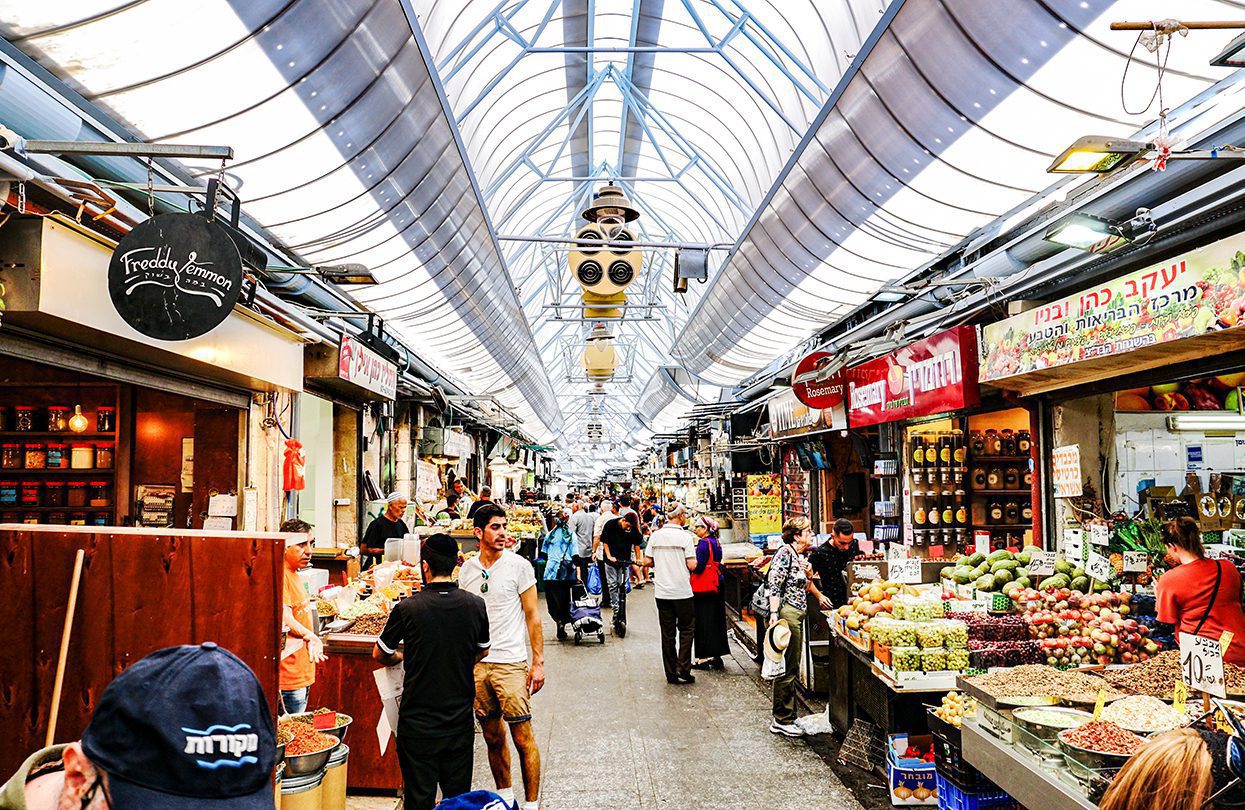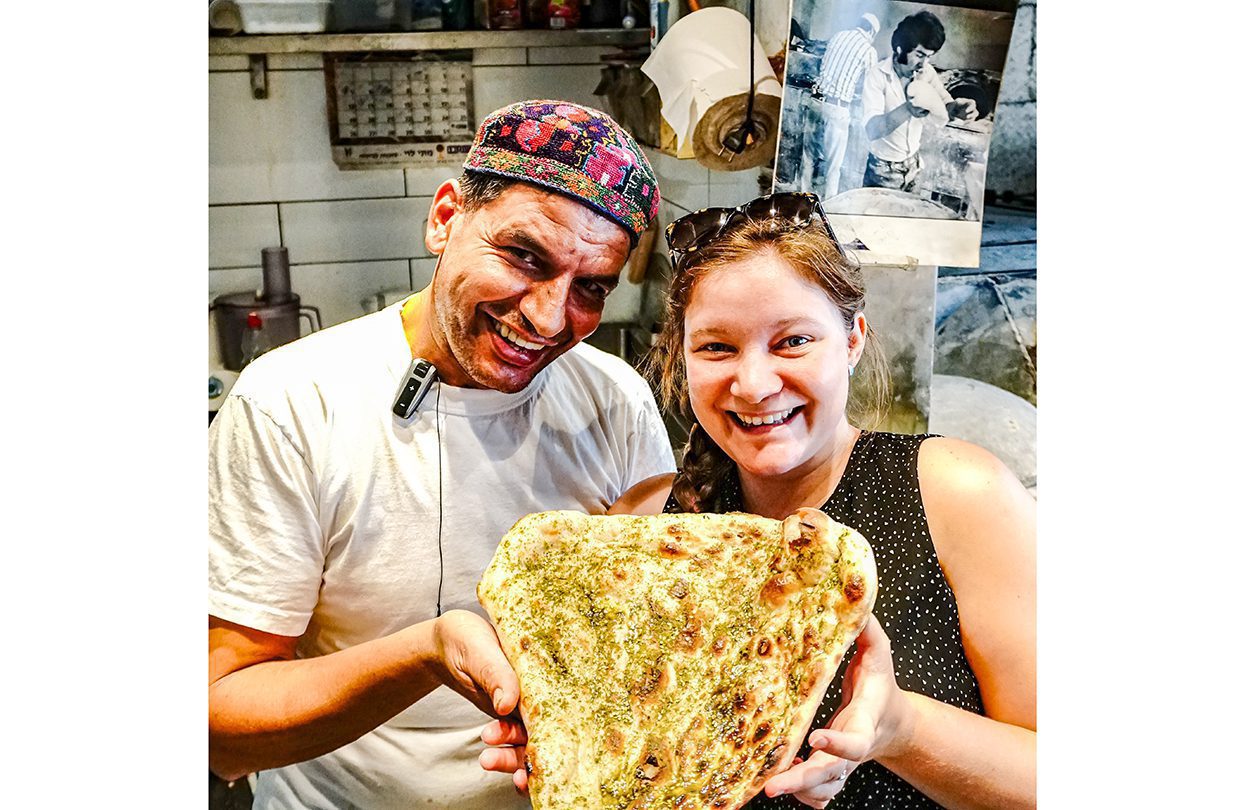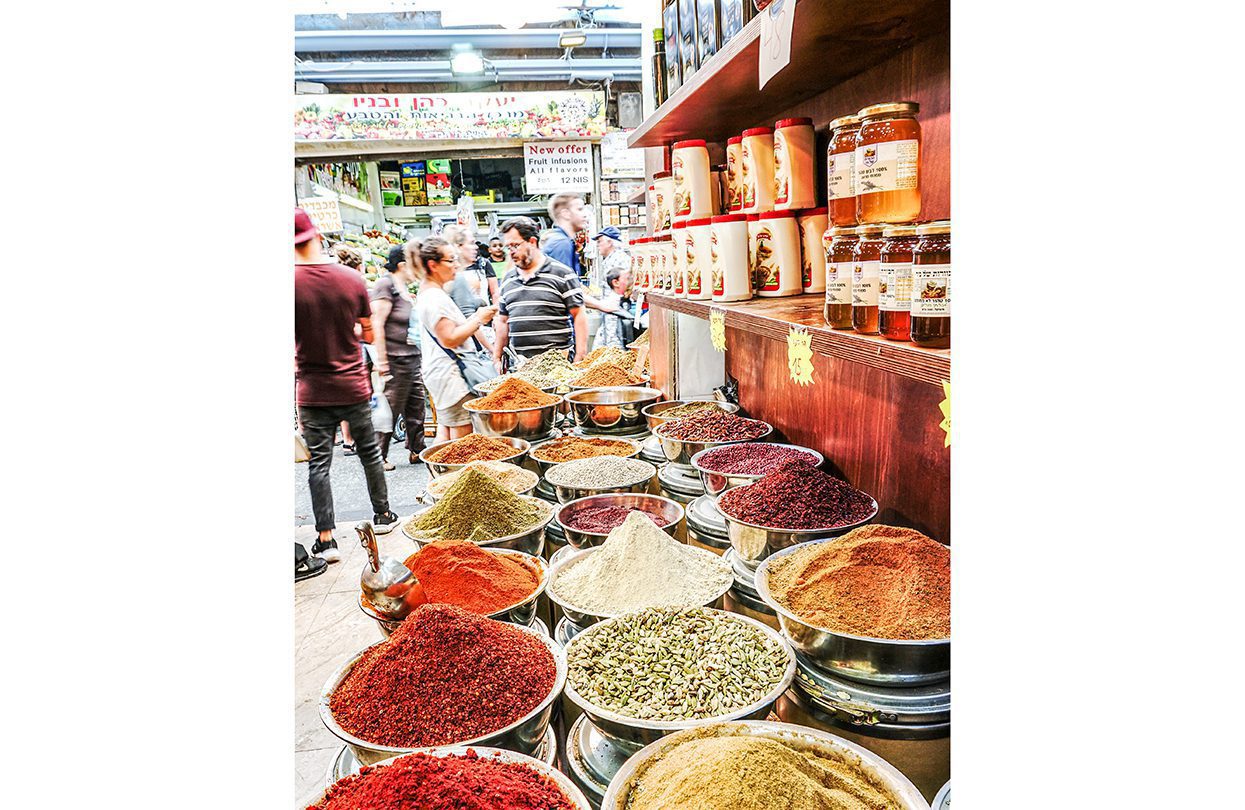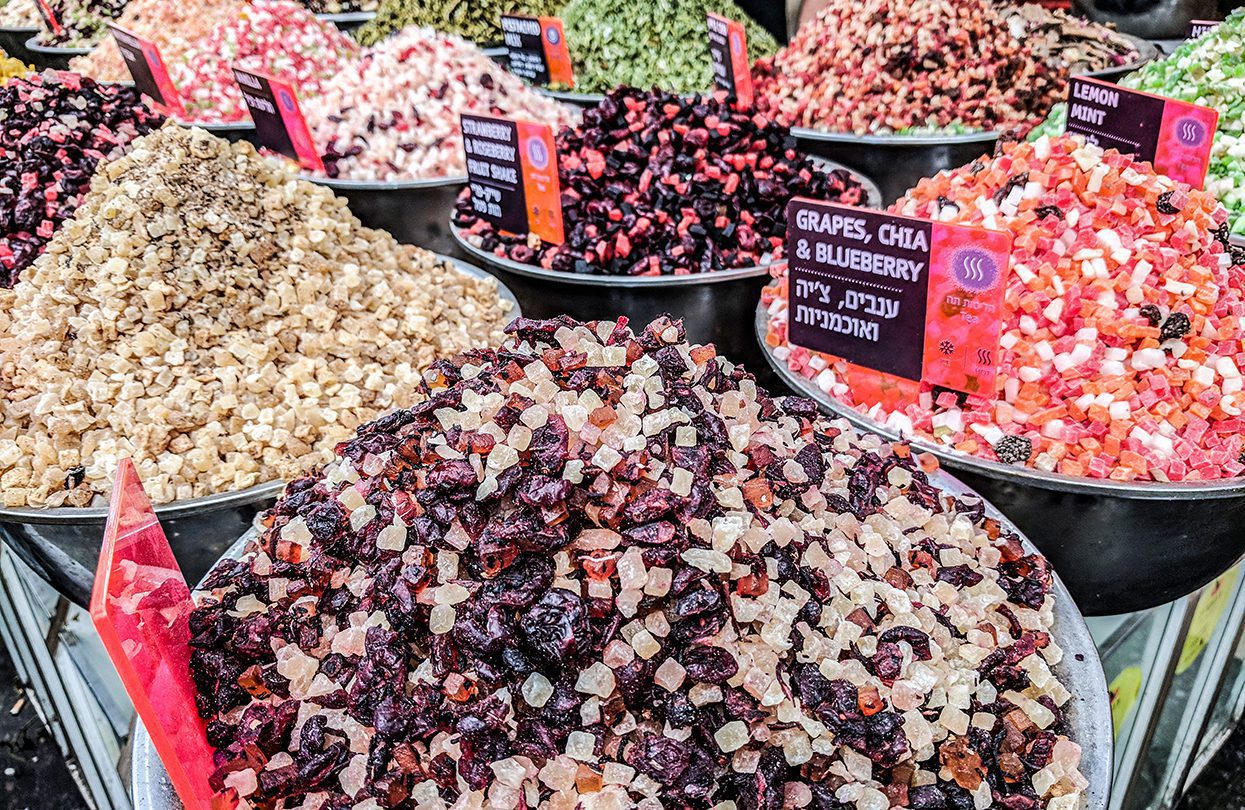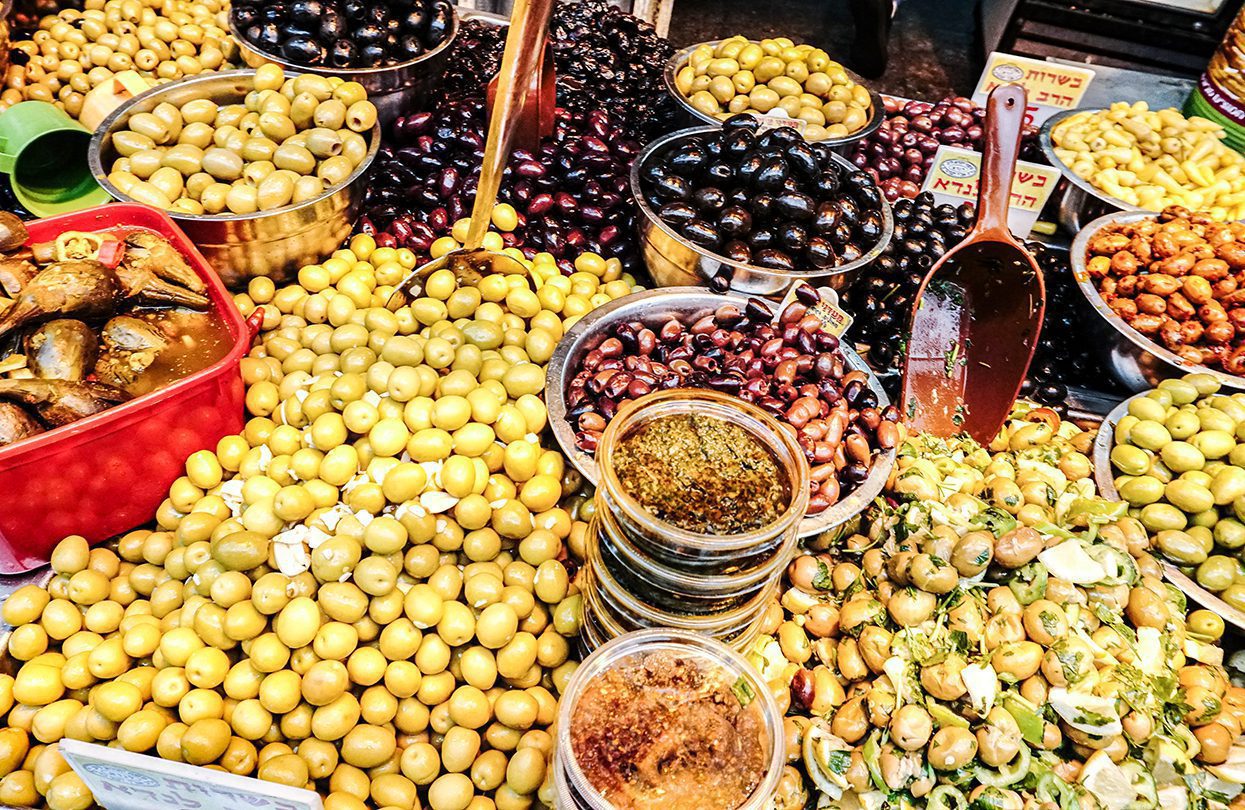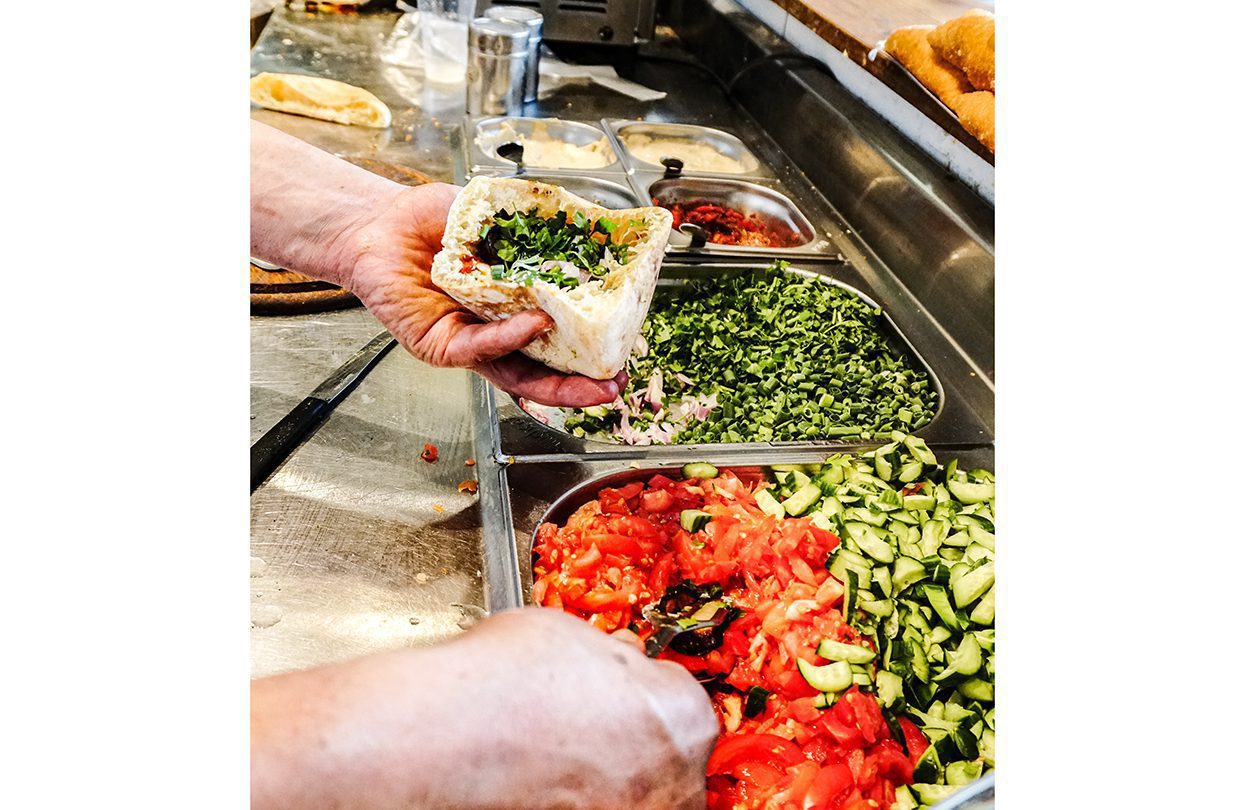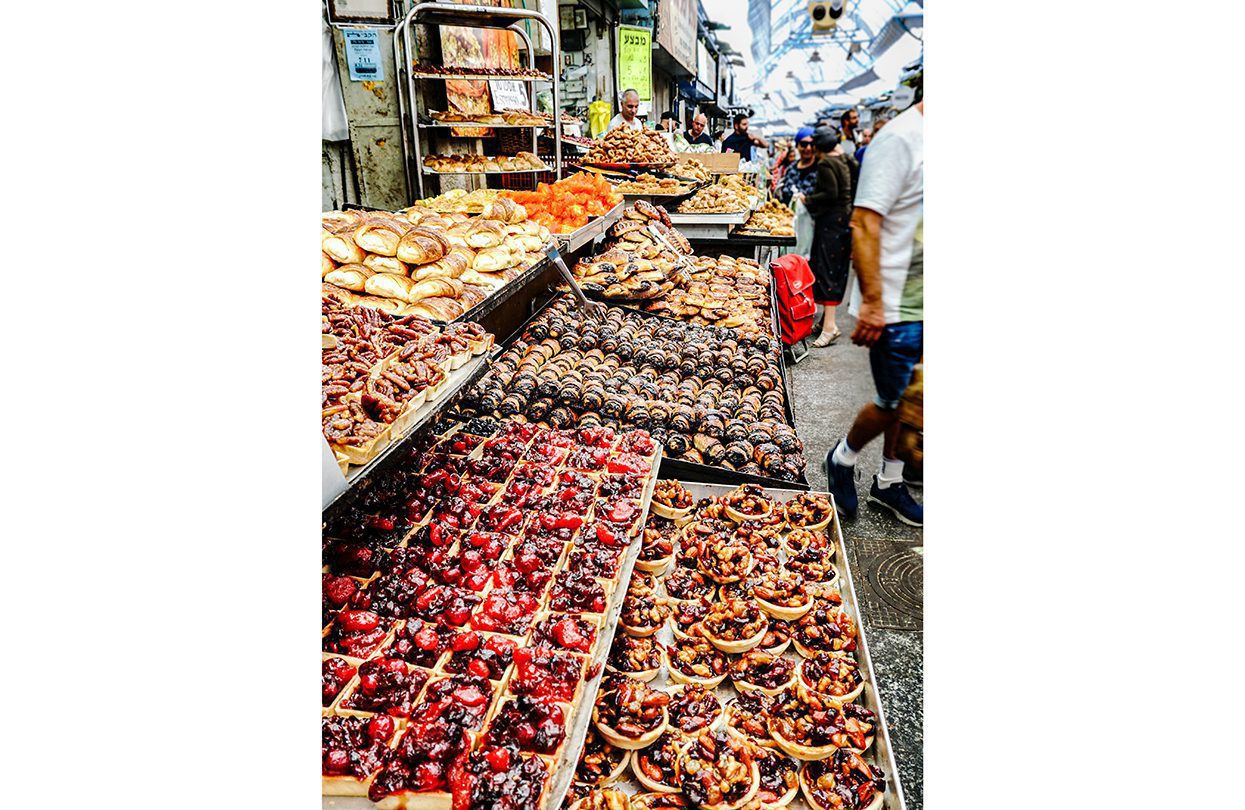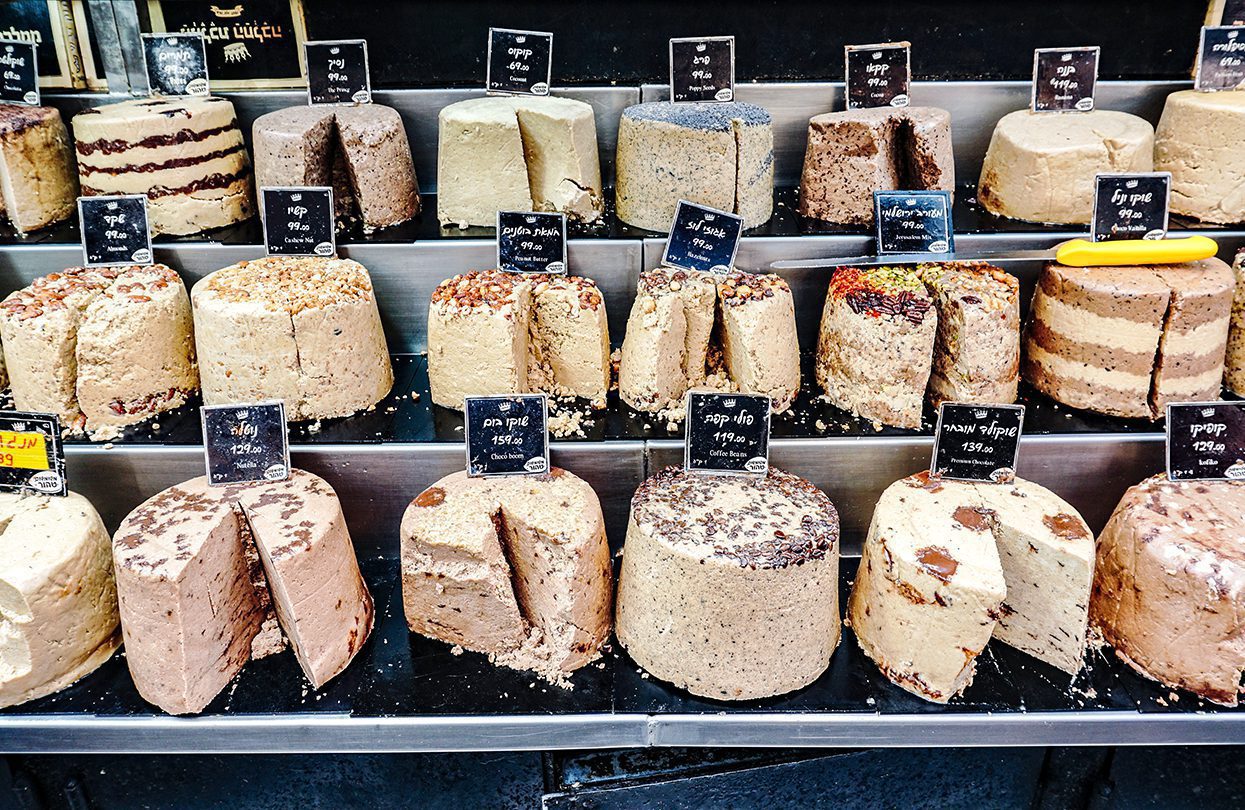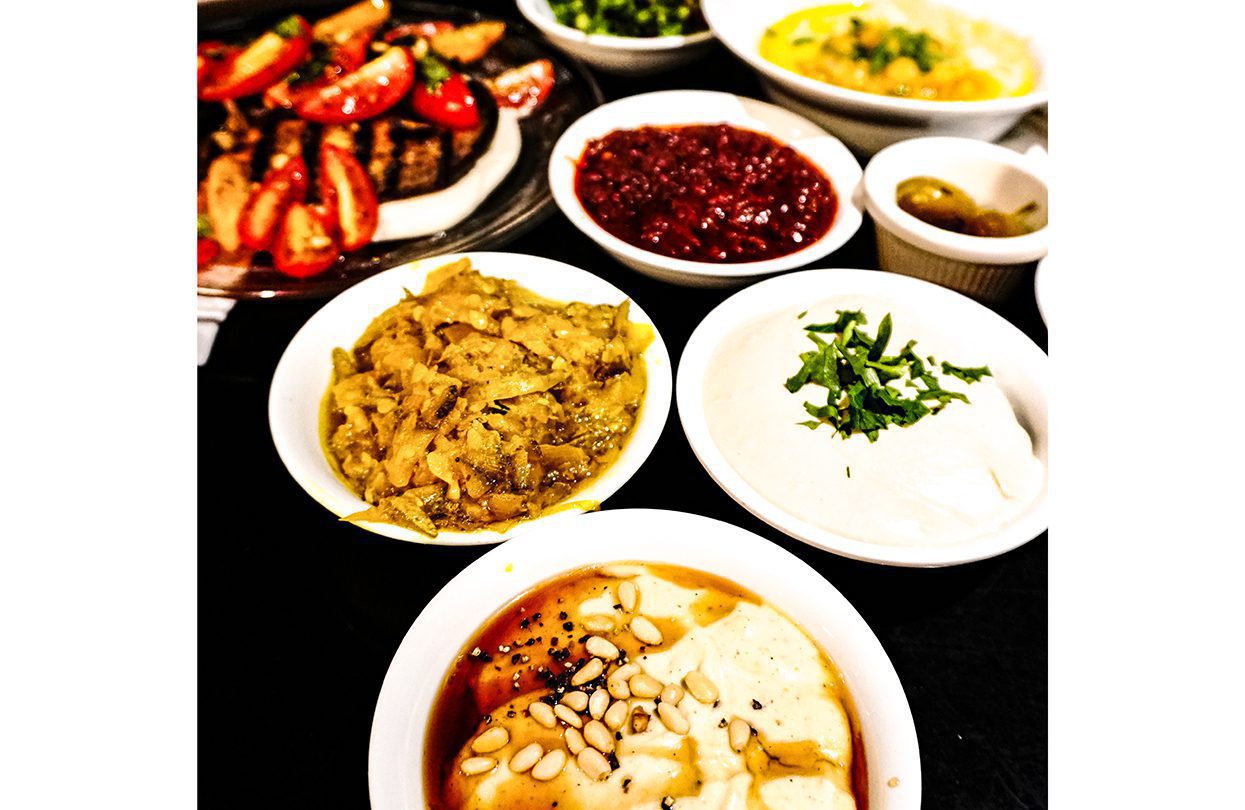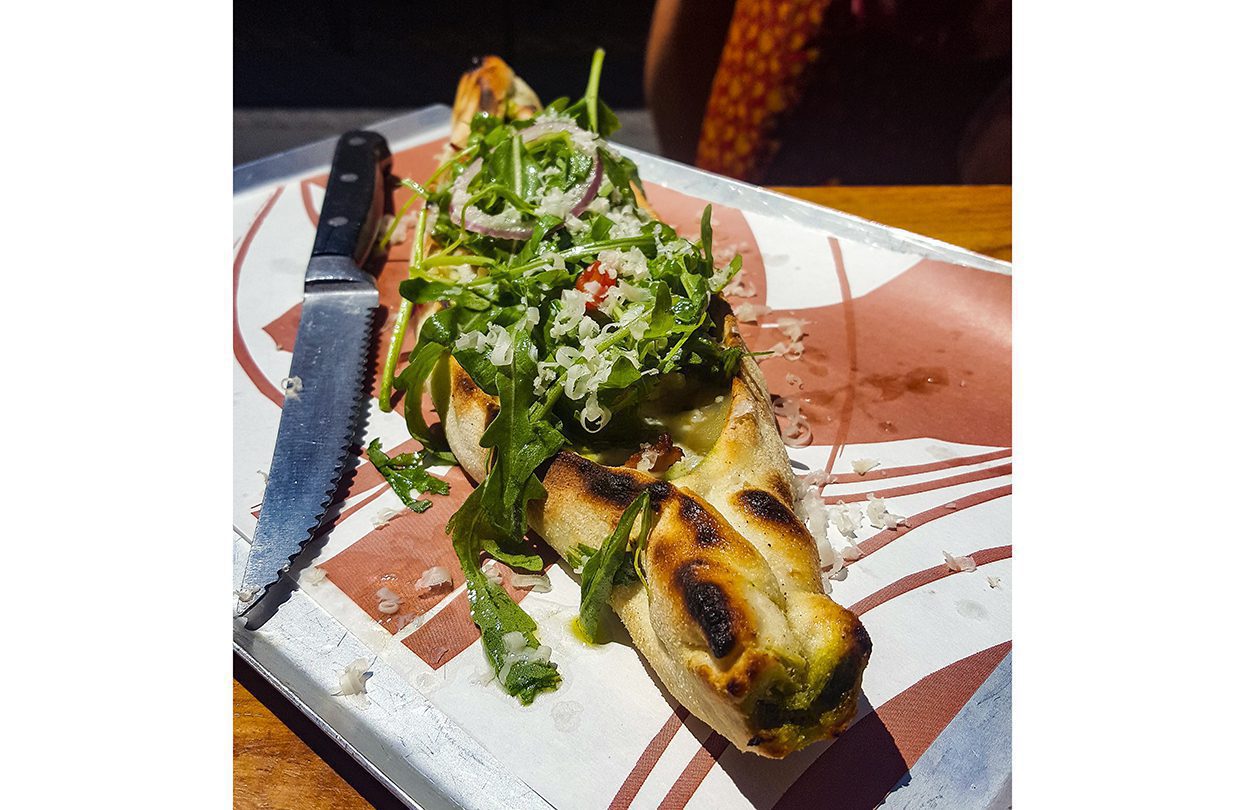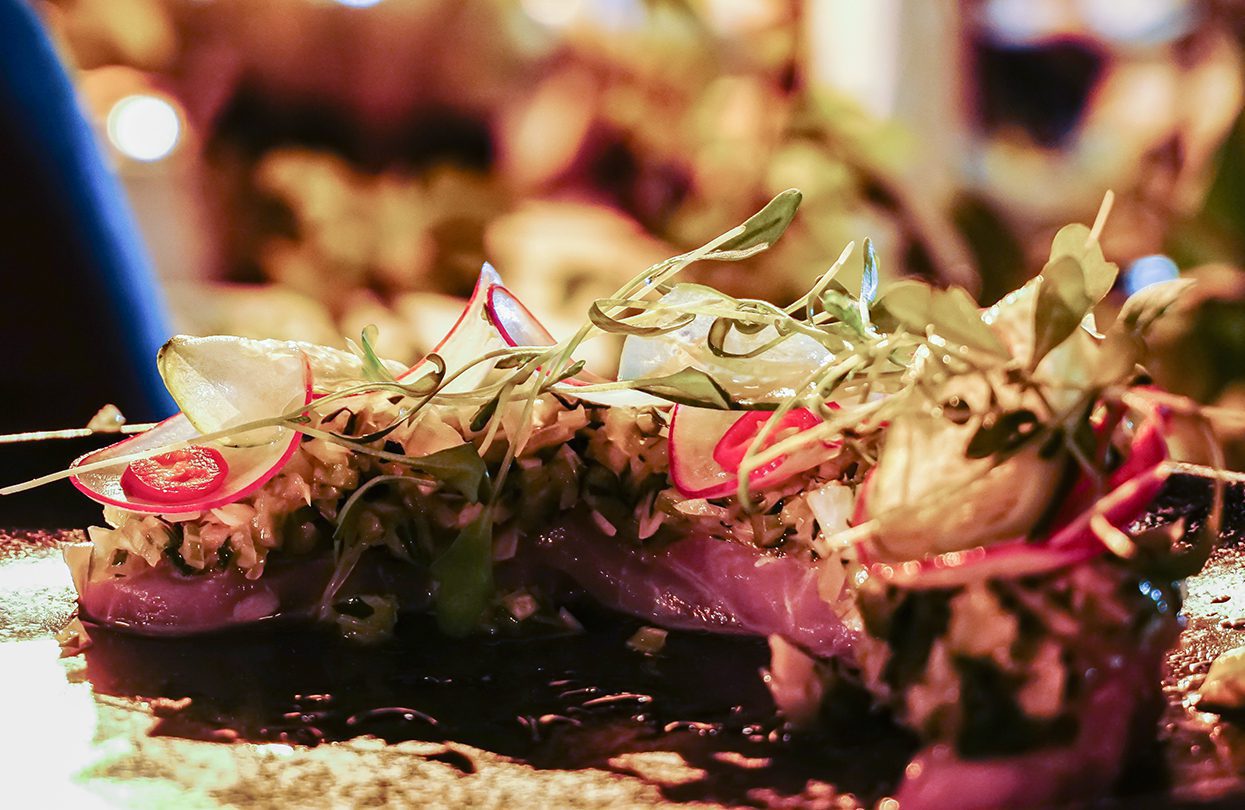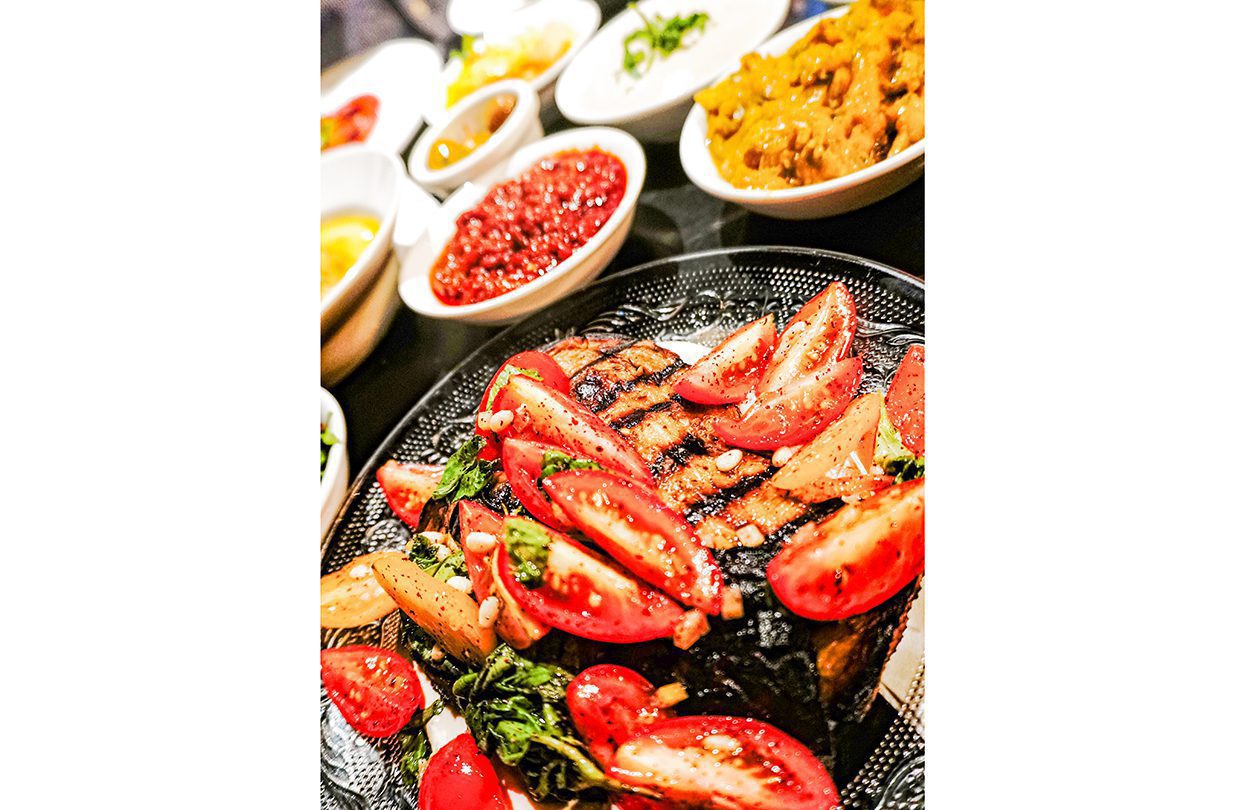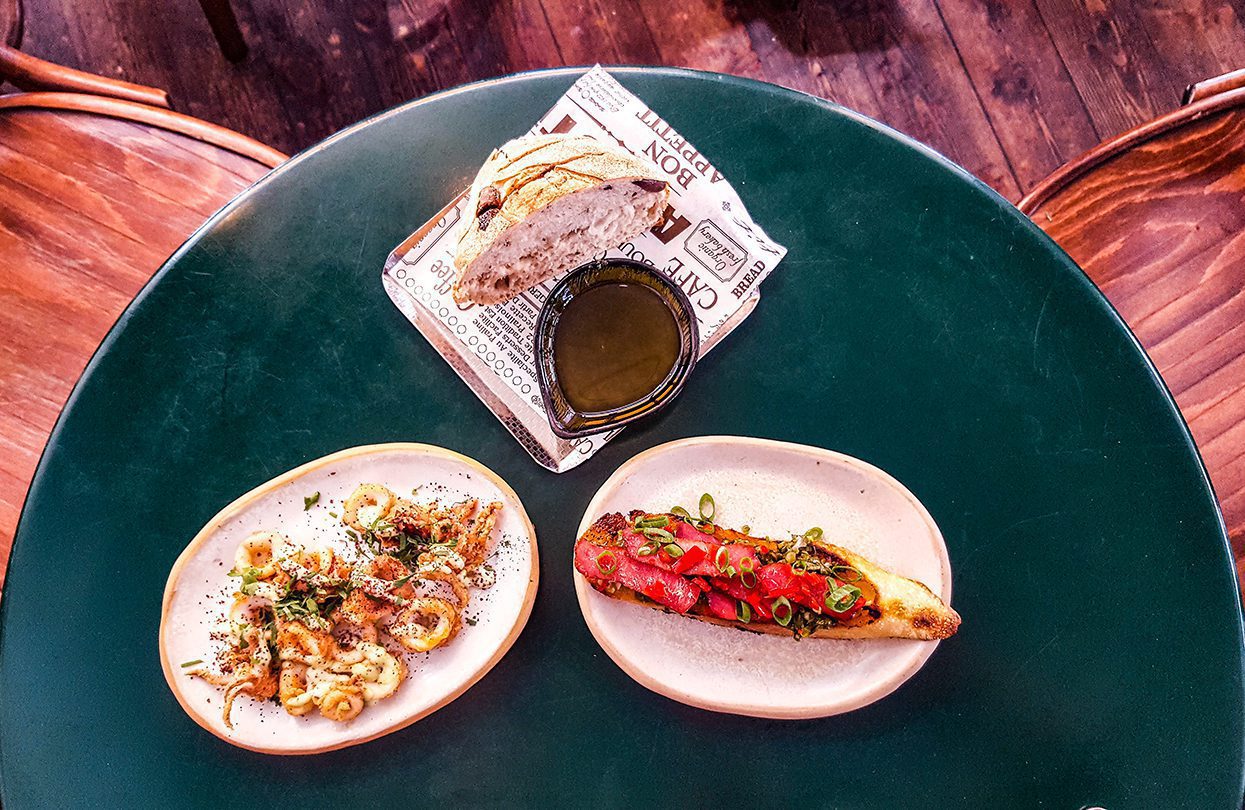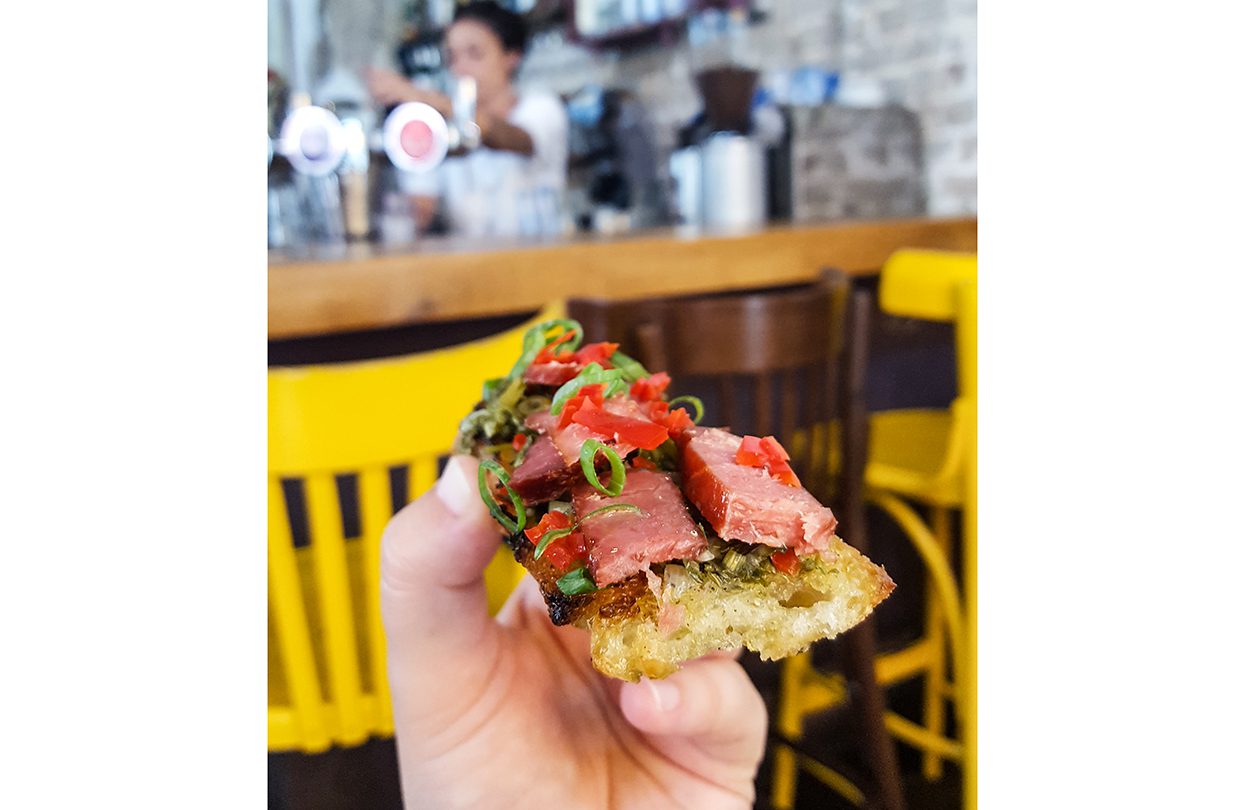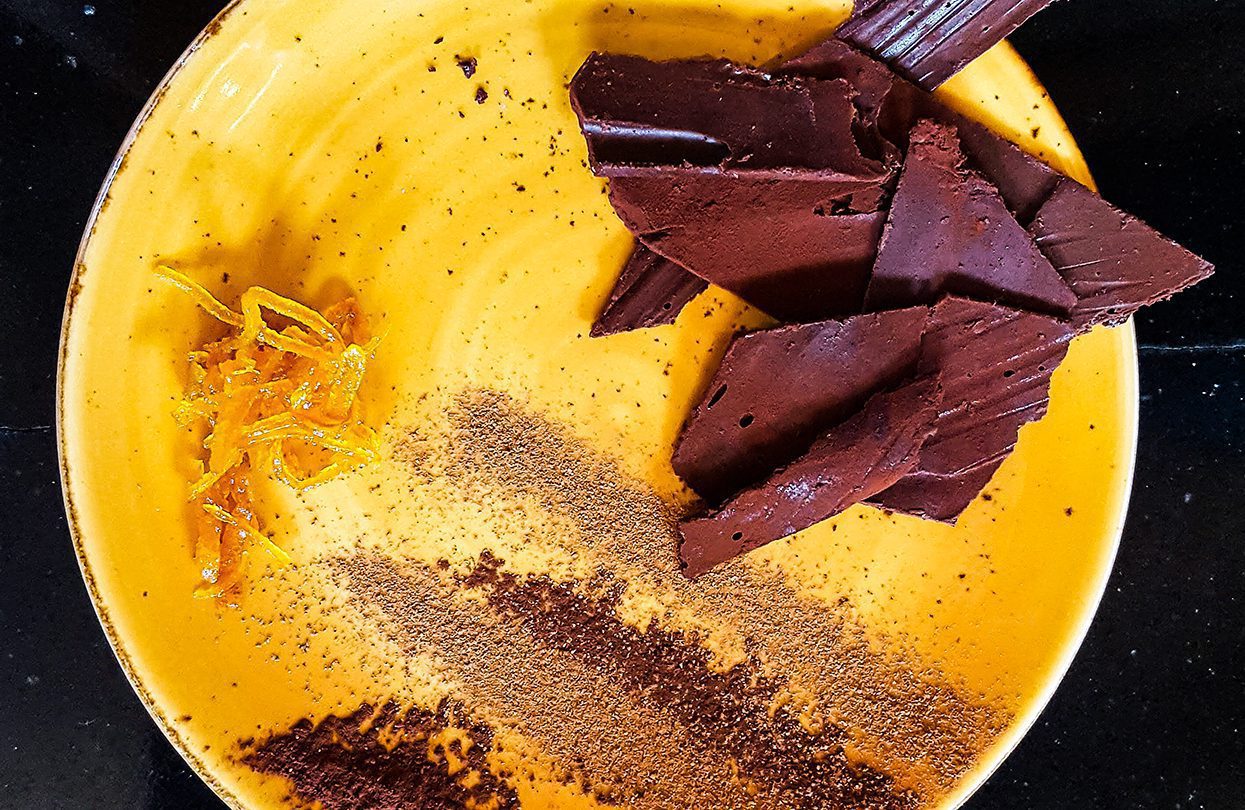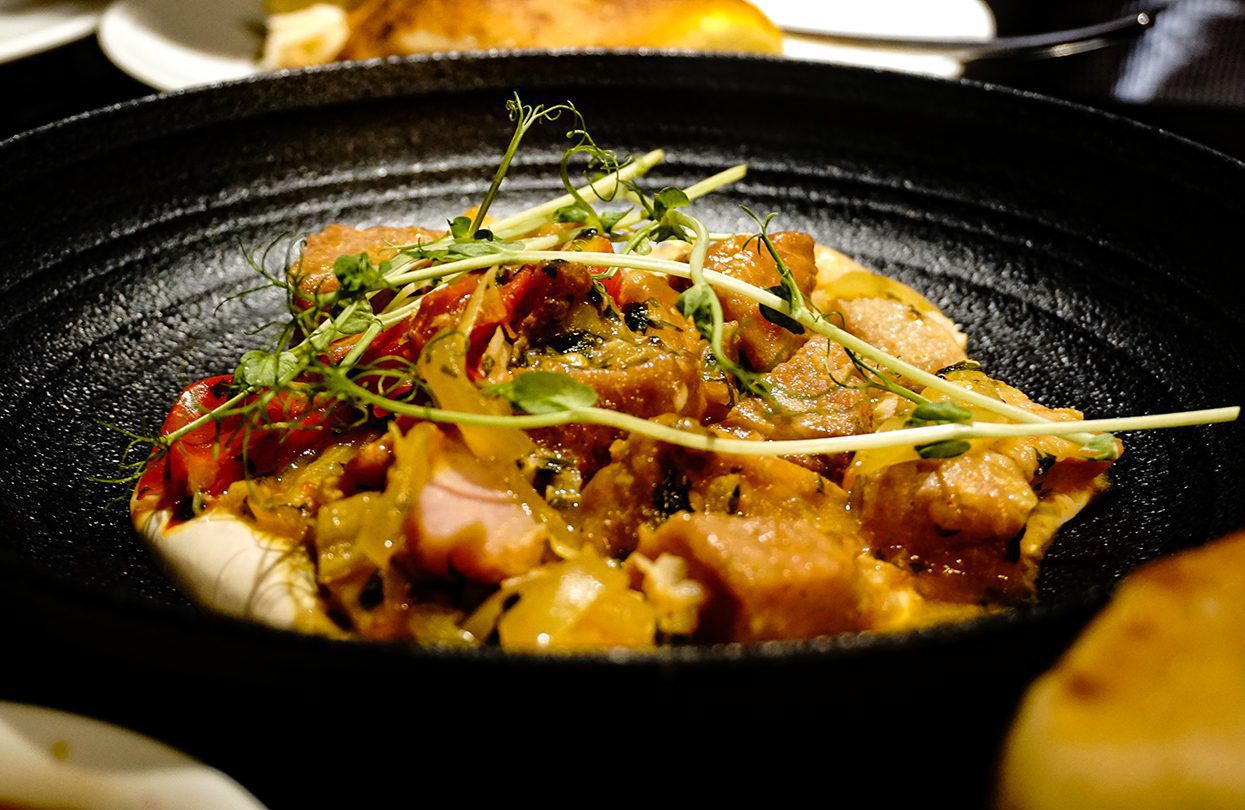As I stand under the baking sun among the rubble of what used to be a parking lot opposite the City of David visitor centre, I can just about piece together the evidence that’s laid out before me. The dusty, faded mosaics on the ground indicate a courtyard and I can see remnants of the stone pillars that once held up the walls of this near 2,000-year-old Roman villa.
The hairs on my arms stand on end as my guide, Yehuda, recounts tales of the intern archaeologist who discovered a hoard of over 200 gold coins here in 2008. A stash that was clearly left in a hurry before the Persians invaded, and whose owner never did return to collect them, their fate unknown.
The fate of Jerusalem back then, though, is not unknown. Thanks to the astonishing array of archaeological sites across the city you can literally see the history play out before you. It seems almost every new development that breaks ground finds something of importance.
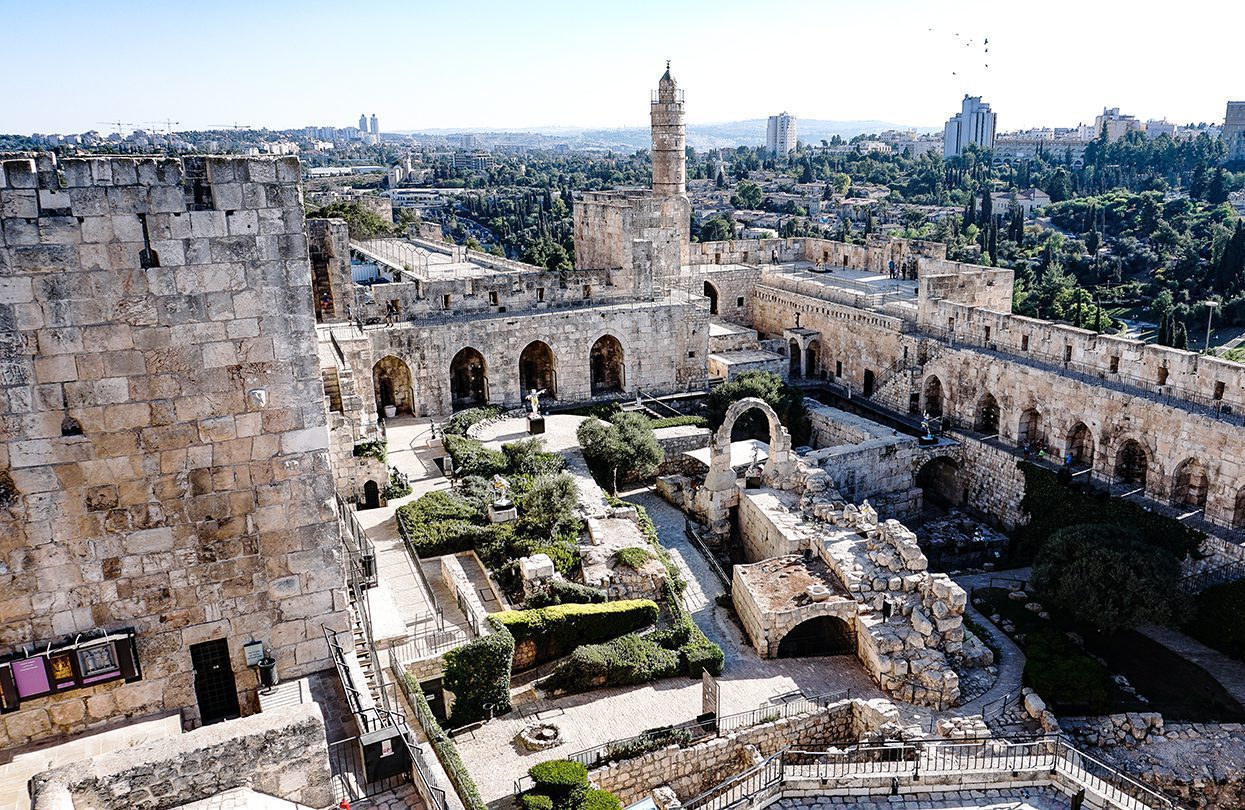
Jerusalem’s Tower of David
The physical evidence of the many civilisations that tried, failed and succeeded in conquering Jerusalem is occasionally overwhelming for a visitor. Just over the road from where I’m standing are the uncovered remains of the City of David and possibly Israel’s most exciting discovery: King David’s palace, the one described in the Bible. In the distance I can see the Old City walls, dating back to the Ottoman era, and inside them lies the Temple Mount which was built by King Solomon in 957 BCE.
There are around 33 excavations across the city, each providing an insight into how Jerusalem changed with each occupation and battle, and how the different religions and cultures found their way here today.
As a result of this turbulent history, modern Jerusalem is a fascinating concoction of cultures from around the world. Outside the Old City walls people from across the globe Ð Jews from South America and Africa, Arabs from all over the Middle East and Orthodox Christians from as far as Russia and Egypt Ð share their traditions in public spaces. And today, there’s no better place to see this in action than the bustling Machane Yehuda Market.
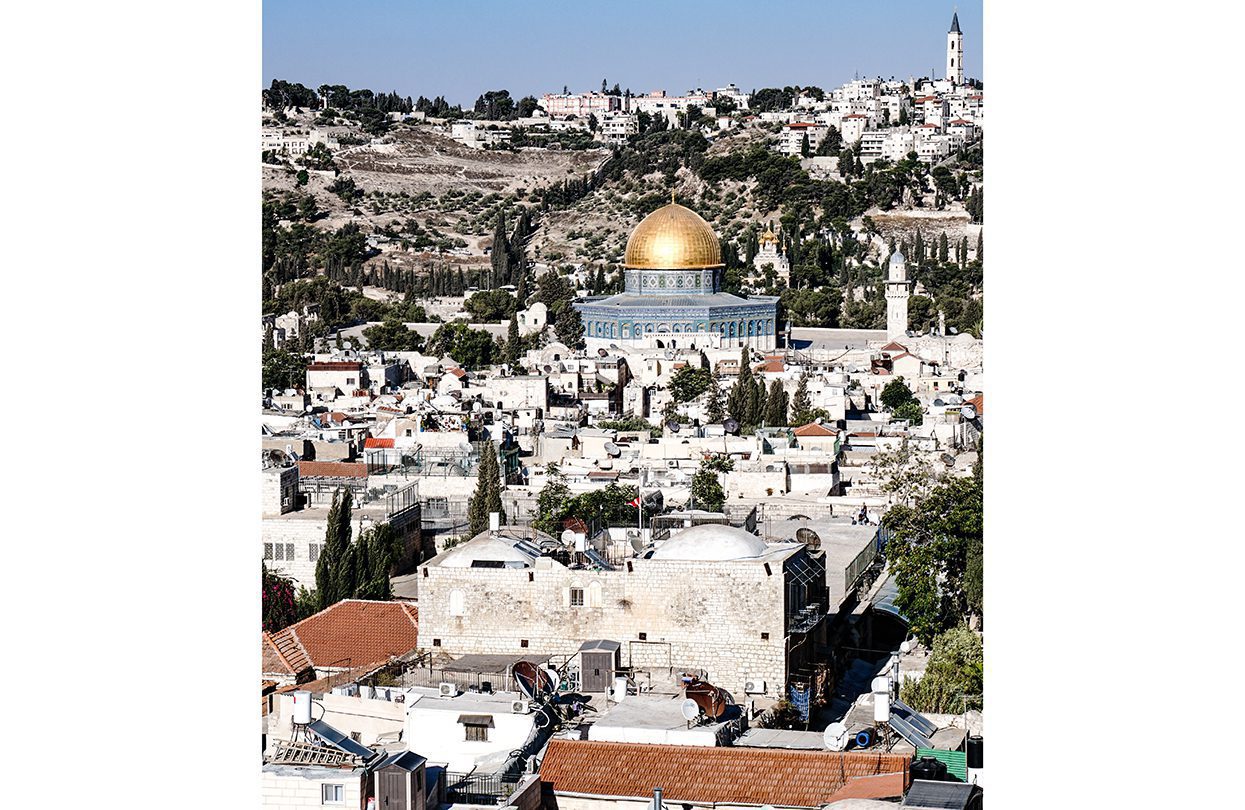
The Dome of the Rock in Jerusalem
Once just a humble plot with a few shacks from which Arab women would sell groceries, Machane Yehuda is now a sprawl of activity. The air has a pungent smell, owing to the blend of herbs, spices, fruit and vegetables piled high on many of the stalls, and as I pass by each stallholder yells in Hebrew, Arabic or English to draw attention to their products. I’m offered tasters of halva Ð a Middle Eastern sweet made from sesame paste Ð dried fruits, roasted nuts and iced tea as I push through the thronging crowds, but I bypass them all in pursuit of a traditional Israeli sandwich: the sabih.
“Haba Bakery makes the best sabih in Israel,” my guide Maria, from food tour company YallaBasta, tells me. The open-fronted shop sits on the fringes of the market with stacks of plump, freshly-baked pita breads on display.
She introduces me to Hassan, whose frown of concentration turns to a cheeky grin as soon as he sees me. He immediately grabs my arm, drags me behind the counter and has me fumbling with some silky dough he’s been kneading.
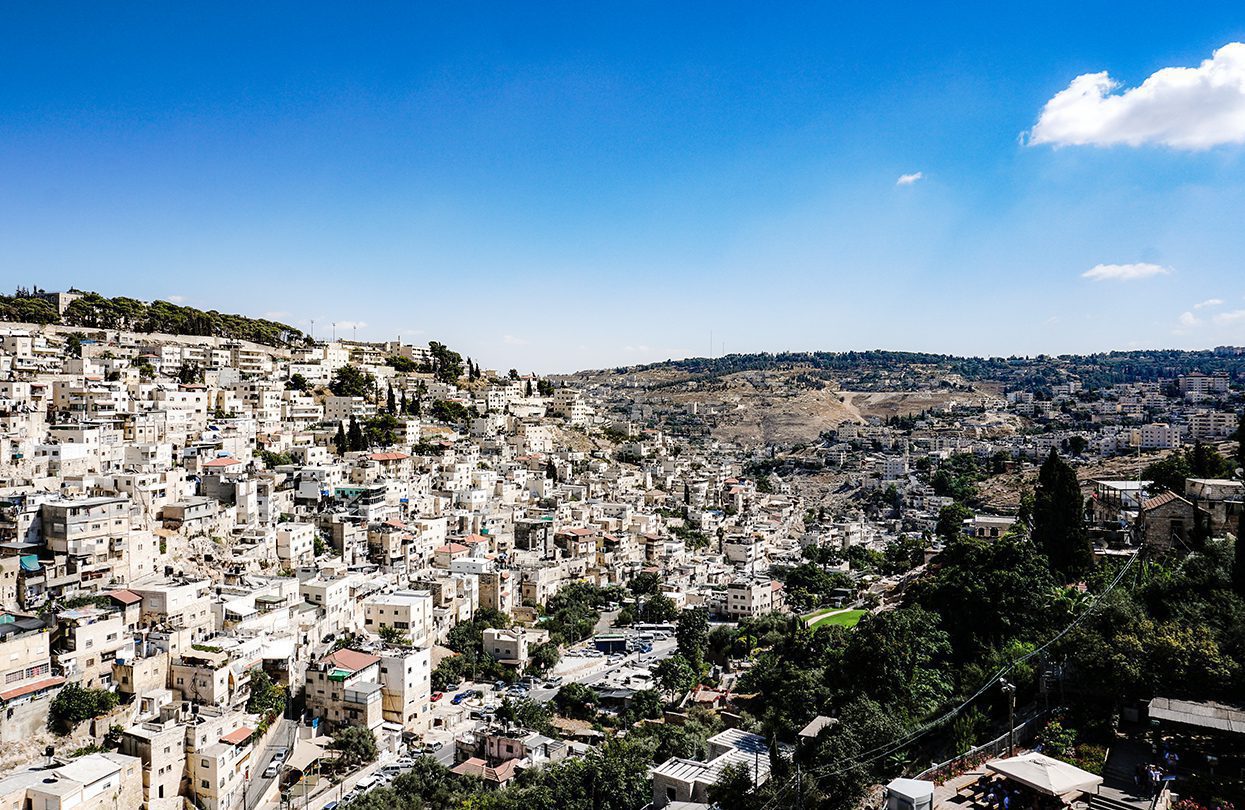
The beautiful city
Originally hailing from Iraq, Hassan is Muslim and his business partner, Zion, is Jewish. The unlikely pair Ð given the history between their two faiths Ð have been making bread together for decades, and a photograph of them with longer hair and fresher faces hangs on the wall next to the smouldering ovens.
My dough doesn’t quite mould into the perfectly rounded disc that Hassan is capable of, but he slaps it on the inside wall of the fiery oven regardless and invites me to stick my head inside to watch it bubble up into an undulating, crispy flatbread. When it’s ready, he pulls it out with long metal tongs and slathers it with olive oil and za’atar Ð my new favourite seasoning, made with hyssop, sumac, sesame seeds and salt. It’s delightfully moreish, but I stop myself, because I know what’s coming next.
He scurries over to the other end of the kitchen where he begins building my sabih. Inside the pita bread he piles slices of fried aubergine, boiled eggs, finely chopped tomatoes and cucumber, and seasons it with tahini and more of that addictive za’atar.
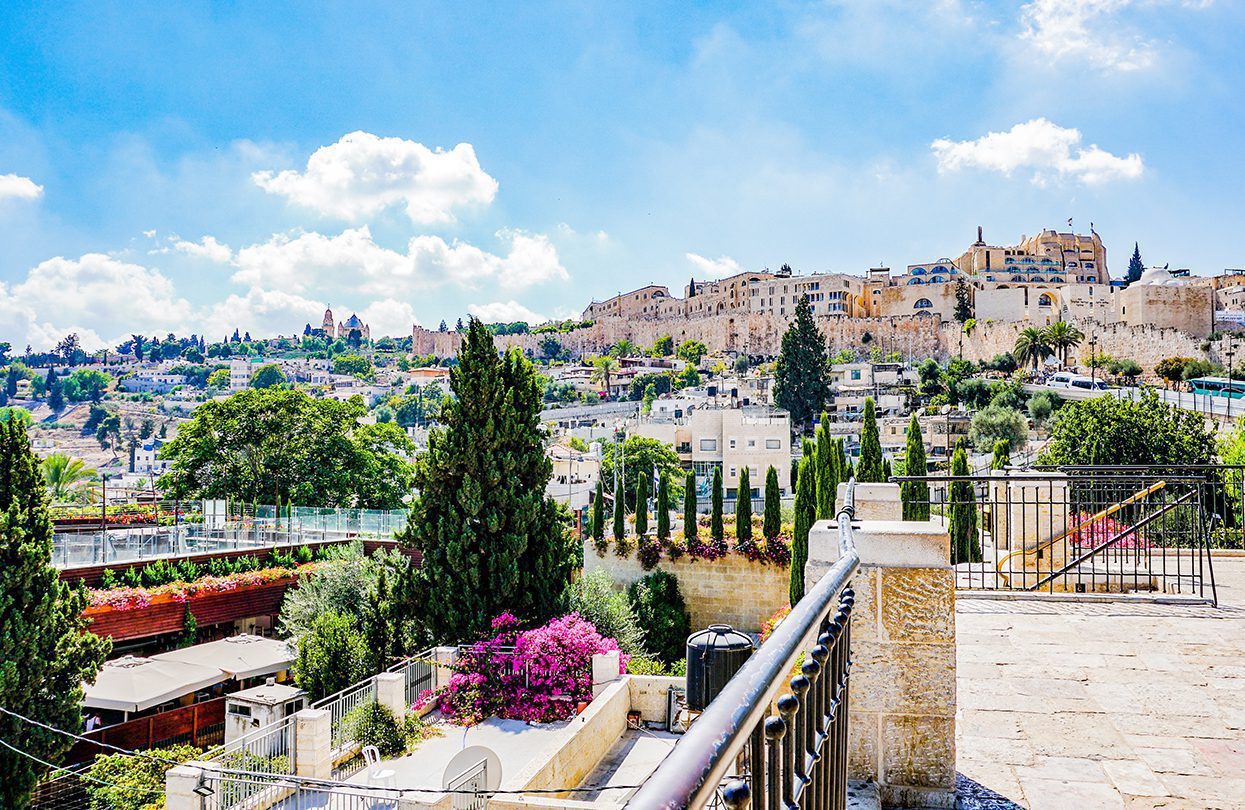
A view of the Old City from the City of David
This deliciously fresh sandwich is a popular street food here, and it’s going to be the next big thing in Europe according to Maria. I hope so, I think to myself Ð I’d quite like to consume this on a daily basis back in London.
My tour of the market continues Ð much to my full stomach’s dismay. I eat a mini khachapuri (cheese-filled bread) made by a Georgian chef who came to Israel when he was just a boy. I quench my thirst with etrog juice, a citrusy health drink inspired by the famous 12th-century rabbi and doctor Maimonides. And I indulge on stuffed vine leaves and kibbeh Ð a bulgur wheat case filled with meat then deep fried Ð at family-run Morduch.
As I jostle through the crowds I spot an Ethiopian shop selling traditional woven baskets, a store specialising in Judaica and kippas (the cap Jewish men wear on the crown of their heads) and tiny cupboard-sized shop offering freshly roasted Arabic coffee beans. The market is a true symbol of the city, with all nationalities, faiths and flavours on display.
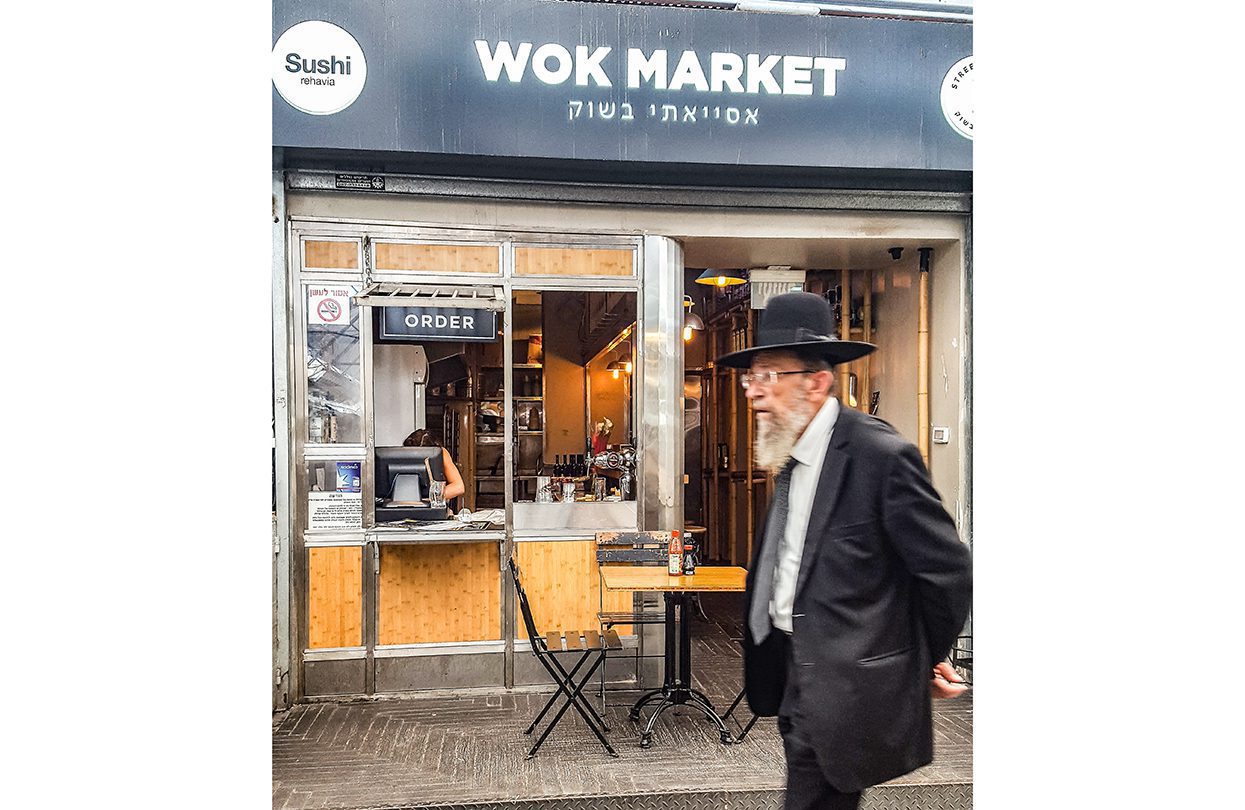
An old man passes a new Asian restaurant in Machne Yehuda
It’s not entirely stuck in its traditional ways though, as a smattering of modern establishments have popped up in recent years. Roasters, the hipster coffee shop that wouldn’t be out of place in Berlin or Copenhagen sits side-by-side with the classic spice sellers. Opposite, a sushi restaurant has tables outside awaiting the lunchtime rush.
On my way out I stumble past an ice cream shop and before I can convince myself I’ve already eaten too much, its 26-year-old owner is asking if I want to see how liquid nitrogen ice cream is made. Of course I do.
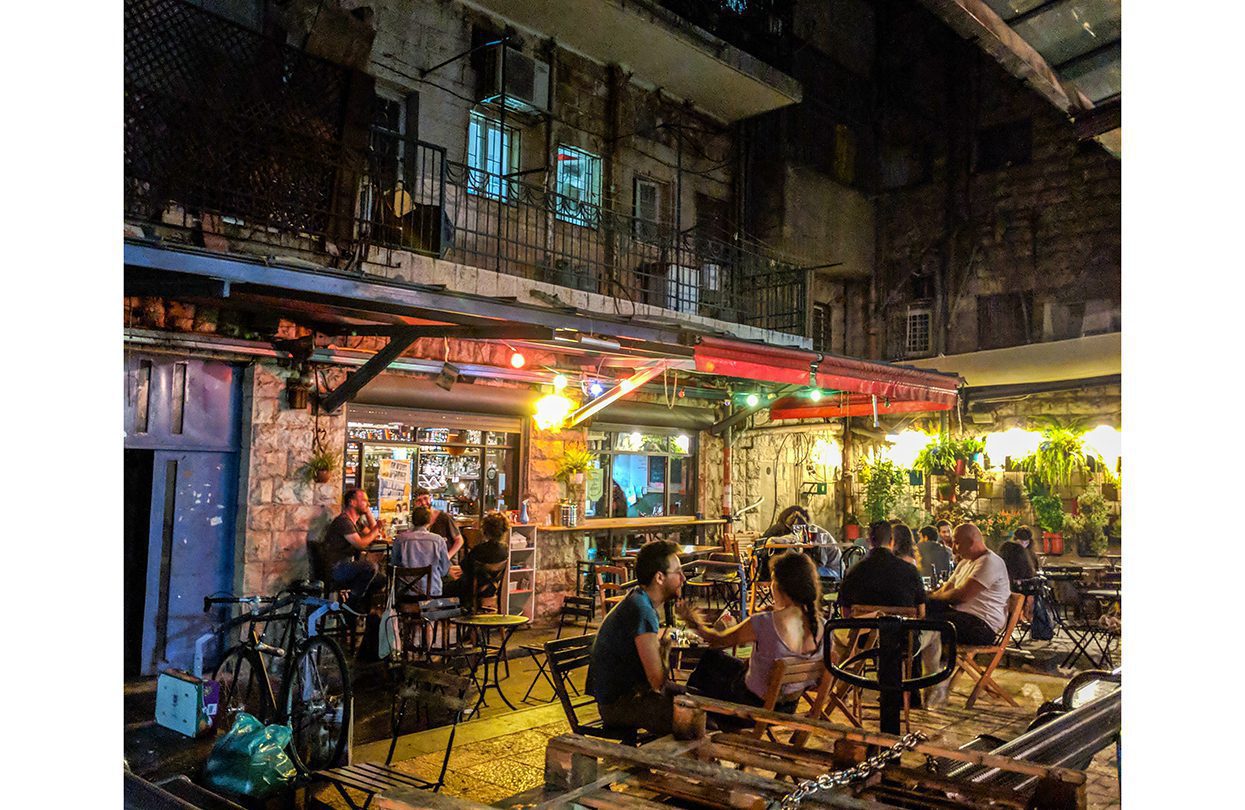
The nightlife scene in Machne Yehuda
Ivan, the Israeli who started the shop with his friend, Rafi, is one of the many innovative young people bringing this market into the 21st century. His instant ice cream shop has been open for just one month he tells me, as he pours liquid nitrogen into my chosen mixture of almond milk, crushed Oreos and chocolate sauce. He saw the idea on American TV show Shark Tank and decided to recreate it here. Customers can choose every single element of their ice cream, from the base (dairy and non-dairy) to the flavours, and it’s ready within minutes, unlike the traditional stuff which takes hours to mix and freeze.
Come night-time, the market doesn’t shut down, but instead comes alive with a far younger, rowdier crowd. With most of the food stalls closed for the evening, a handful of bars spread themselves out along the walkways. Display stands are covered with cushions and blankets to be used as seating at cocktail bar Tap & Tail, and the Beer Bazaar uses upturned crates for tables and spills out of the market onto the streets.
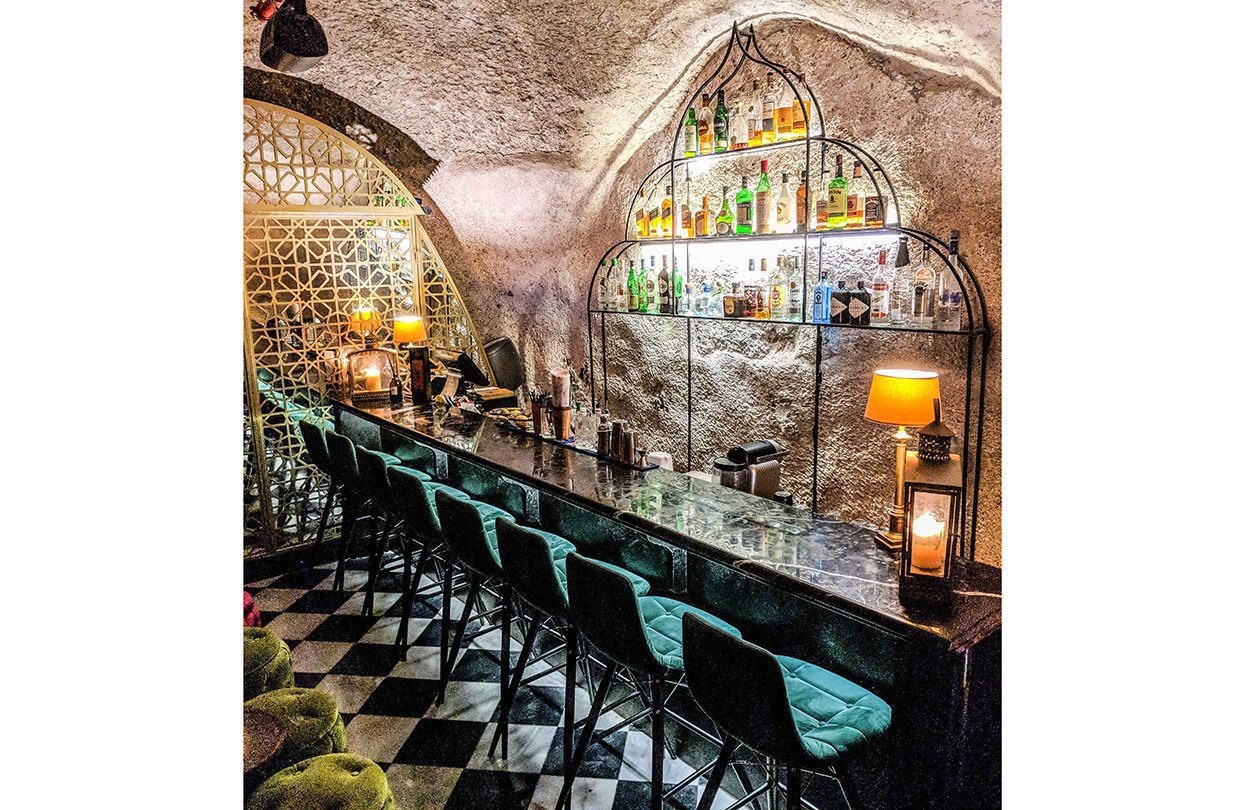
The ‘cave bar’ at Villa Brown, Jerusalem
The vibe, I find out the following evening, is reminiscent of many bars in Tel Aviv, Israel’s glistening coastal gem. I arrive there late at night and head to my apartment in Florentin, the city’s creative neighbourhood famous for its many murals and street art pieces. On a Thursday evening, it’s all lively bars, al fresco drinking terraces and small corner shops selling street food to the inebriated masses.
It seems, though, that this is one of the few things Jerusalem and Tel Aviv has in common. Otherwise, these two cities Ð just an hour apart by road Ð are starkly different places.
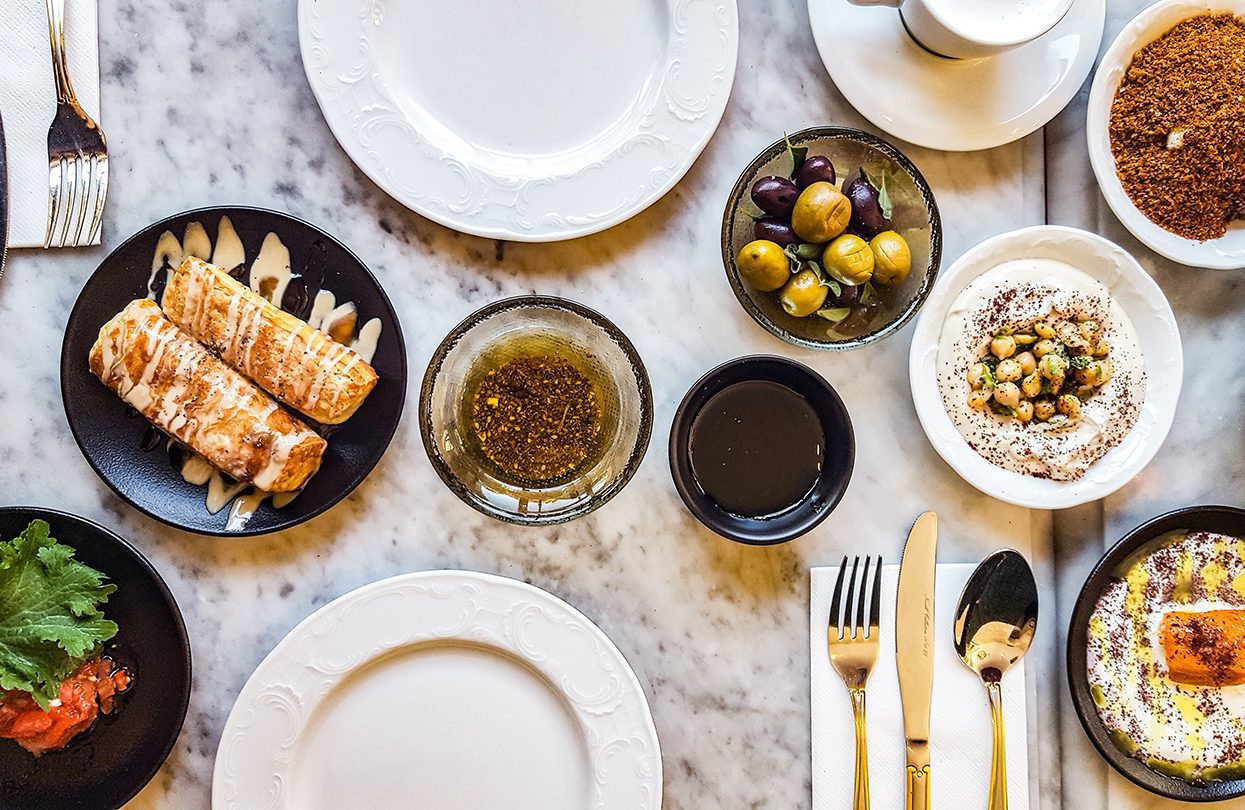
The mammoth breakfast at Villa Brown, Jerusalem
Tel Aviv was destroyed and rebuilt many times throughout history, so today, most of its buildings date back no more than a hundred years. Instead of the beautiful sandstone structures the Old City of Jerusalem is famous for, this far more cosmopolitan city is all concrete and glass. High-rise hotels stand tall along its beachfront promenade, where hundreds of tourists and locals alike come to stroll and enjoy the sea breeze after the hottest hours of the day are over.
On an evening amble I pass buzzing beach bars with blaring music, volleyball tournaments and groups of friends picnicking on the sand. It seems the party here goes on well into the night, but I’m less interested in the late-night drinking culture and more excited by this city’s food scene. Tel Aviv is home to some of Israel’s best chefs.
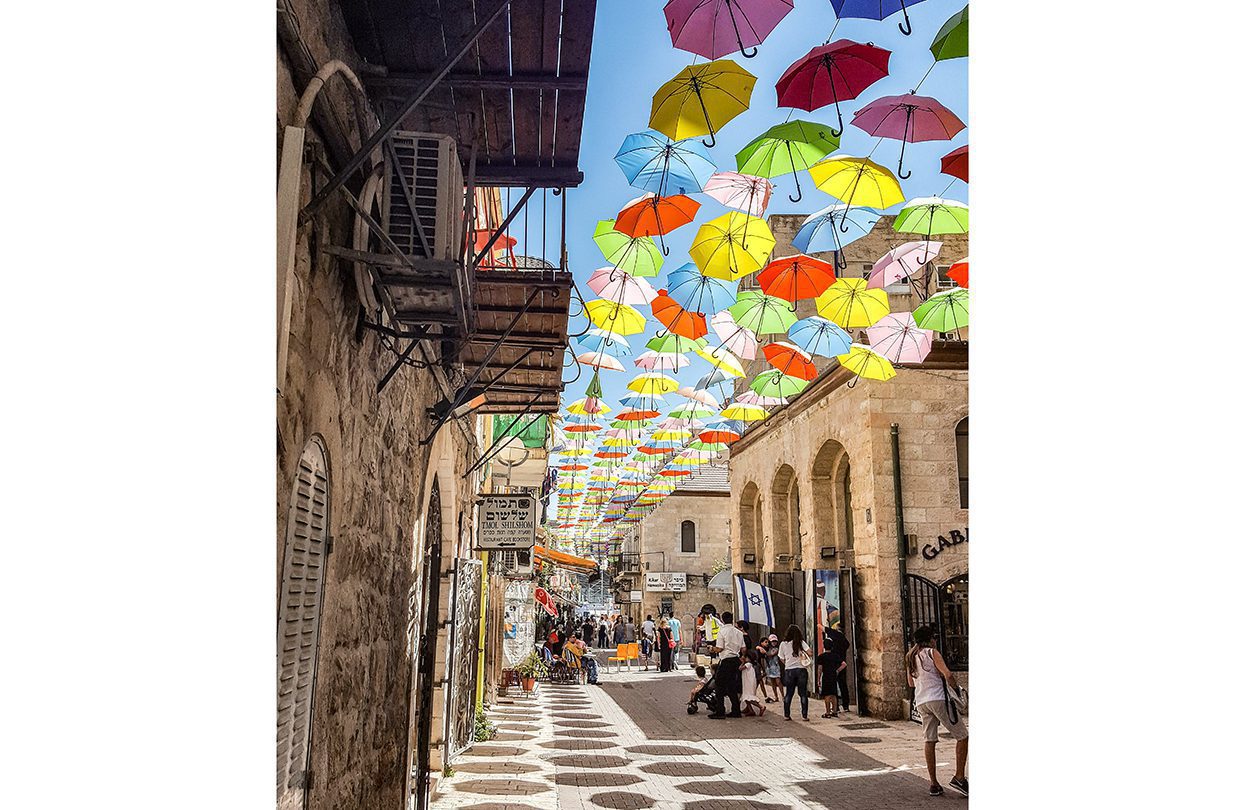
Umbrellas suspended over Yoel Moshe Solomon Street in Jerusalem
One of those chefs is RazRahav Ð the 26-year-old behind Tel Aviv’s sole tasting menu-only restaurant. OCD Ð named for his own obsessive compulsive tendencies Ð has just 20 seats at a bar around its open kitchen and only serves two covers a night.
When they first opened, word on the restaurant scene was that OCD wouldn’t last more than three months. Israelis, Rahav tells me, want to go somewhere they can own the experience, play loud music and dance on the tables, and this isn’t somewhere you just come to eat. This is somewhere you come to be fed. “I know what’s best, so I devise the set menus and wine pairings,” he says sternly, as if the idea of choosing your own food from a menu is abhorrent.
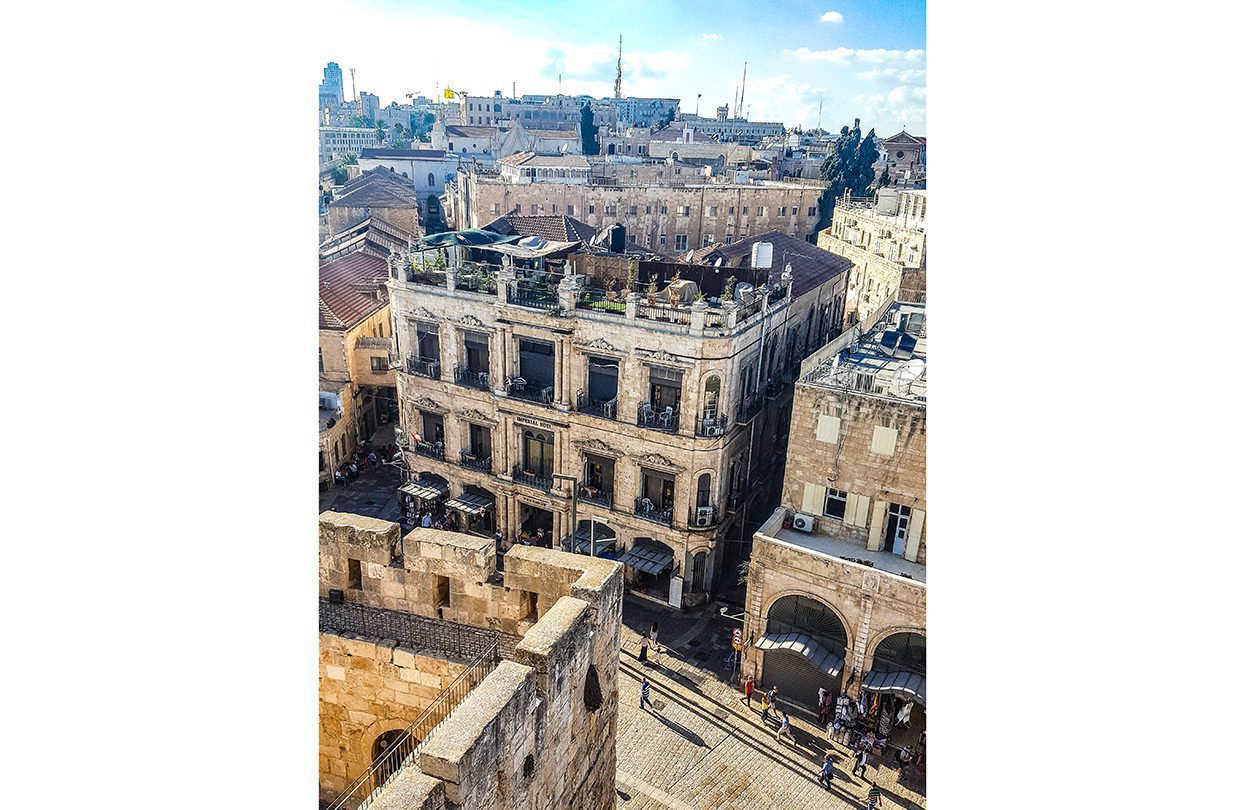
Rooftops of the Old City of Jerusalem
Three years in and they’re still going strong: OCD is fully-booked for at least two months in advance Ð Tel Avivians have clearly shown a taste for experiential dining, and Rahav expects more places like this will open as a result.
Unfortunately, this means I don’t get to taste any of his exquisite creations, but he does point me in the direction of some exceptional Tel Aviv restaurants. I have lunch at Onza, in the heart of the Jaffa Flea Market where you can find anything from old mobile phones to high-end, handmade furniture.
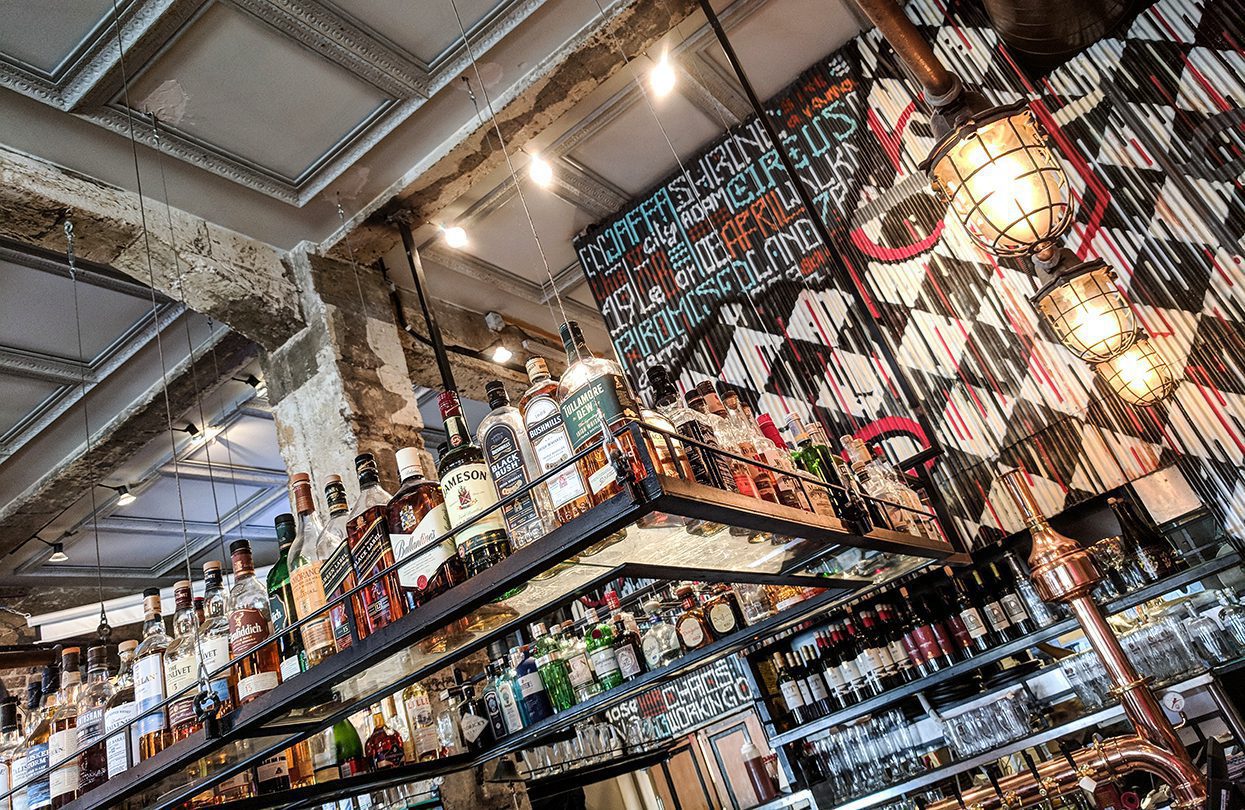
The bar at Raisa, Tel Aviv
There, chefs Arik Darhani and MuliMagriso have devised a divine Turkish menu. I sit outside in the sweltering midday sun and feast on subörek (boiled pastry with feta cheese and herbs), walnut and tomato salad and tadoum, a Turkish bread filled with cheese, seafood and slices of ‘lamb bacon’.
An ideal people-watching spot, it’s here I realise how different this place feels to Jerusalem. There are no religious men wearing orthodox dress, but instead young couples holding hands, browsing jewellery boutiques and drinking cocktails in the sun.
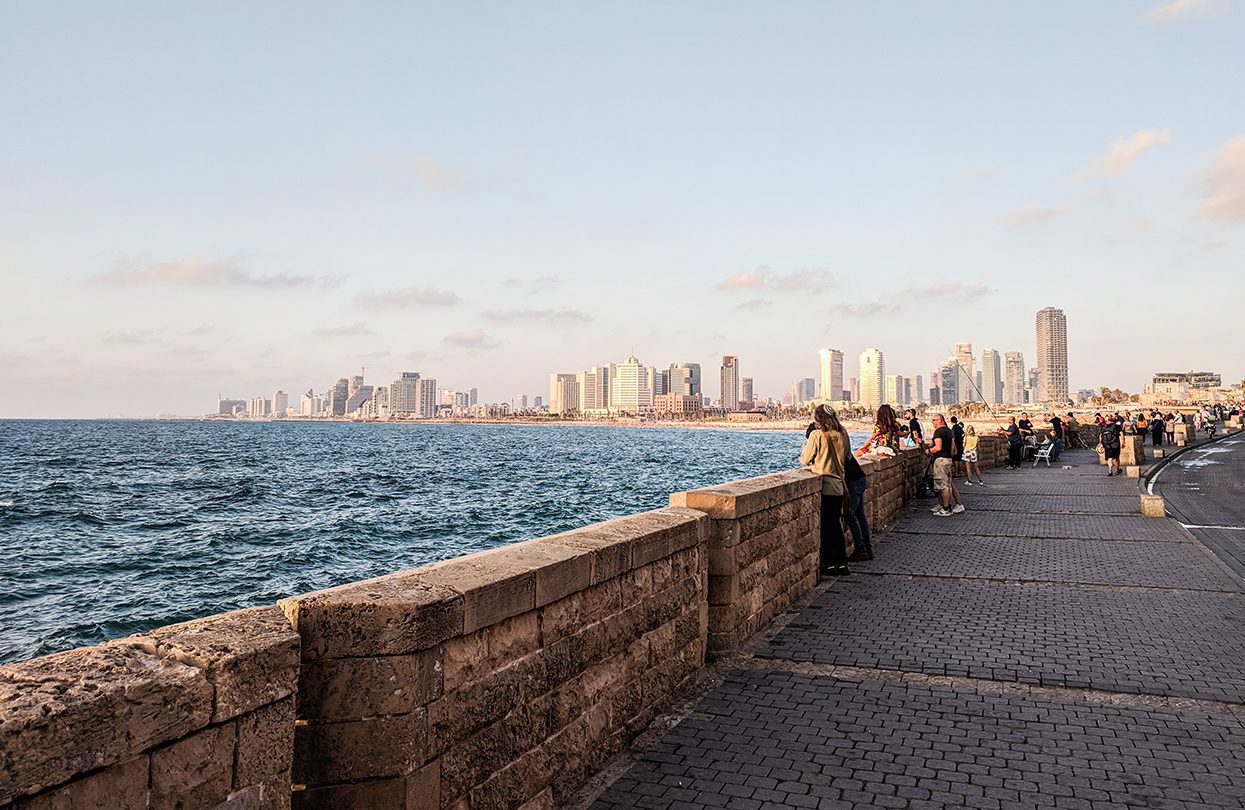
Tel Aviv as seen from Jaffa at sunset
As I sit down at a bar my own afternoon drink, the barman at Raisa insists on pouring me shots of ouzo alongside my cocktail. For dinner I eat at Coffeebar, a Tel Aviv fine-dining institution and another of Chef Rahav’sfavourites. It’s heaving with locals even on Shabbat Ð a scene you’re unlikely to find in Jerusalem on a Friday evening, when most of the city’s population are at home with family and many restaurants are closed.
This might not be the Holy City, but it’s certainly a city of hedonism and just the kind of place I could spend a week or two.
Where to eat
In Jerusalem, try a little of everything in the Machane Yehuda Market with YallaBasta’s Bite Card (purchase online at yallabasta.com); feast on falafel at the most popular joint in town, Moshiko; have afternoon tea at the gorgeous Villa Brown Hotel; and eat brilliant meat dishes atHachatzer.
In Tel Aviv, book well in advance for the 12-14 course tasting menu at OCD, or try chef Rahav’s gourmet sandwiches at Barvazi Urban Sandwich; for brilliant modern Turkish food head to Onza in Jaffa Flea Market; eat Mediterranean dishes at Ouzeria; MeshekBarzilayserves fresh, healthy international vegan dishes; and for fine-dining and excellent Israeli wines go to Coffeebar.
Where to stay
Brown Beach House in Tel Aviv is prime location for seaside fun, and their sister hotel, Villa Brown, in Jerusalem is a gorgeous Ottoman property, lovingly converted into a beautiful stunning hotel Ð breakfast at both is an exceptional feast of meze. For ultra-luxury and an exceptional location next to the Old City in Jerusalem, try Mamilla, which has a spa, two restaurants and a luxury shopping parade nearby.
Photographs by Latn Black
International access: Ben Gurion International Airport (TLV) is Israel’s main airport situated a 35 minutes’ drive from Jerusalem and a 30 minutes’ drive from Tel Aviv.
Preferred airlines: Turkish Airlines operates 9 daily flights from IST-TLV vice versa on Business and Economy class cabins. ◼
Subscribe to the latest edition now by clicking here.
© This article was first published in Oct-Nov 2018 edition of World Travel Magazine.


